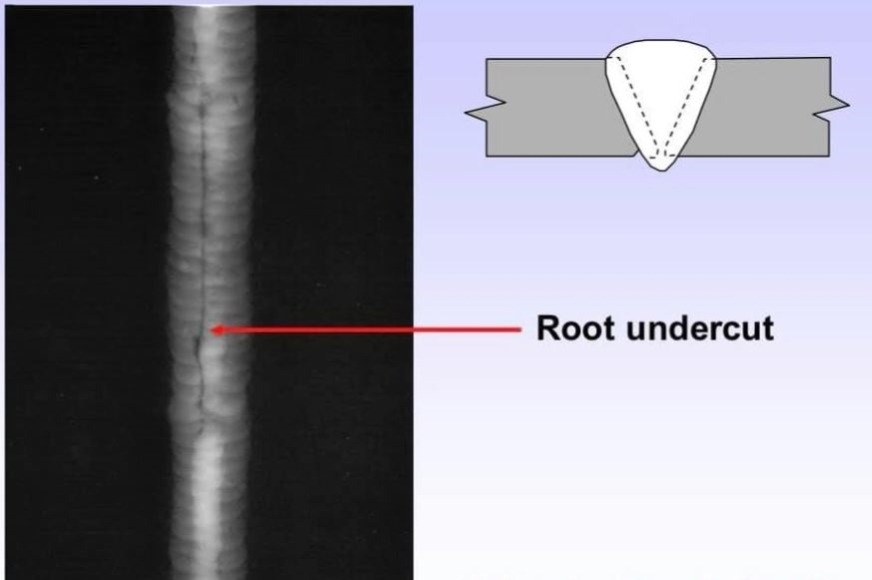Finest Practices for Preventing Weld Undercut: Grasping the Essentials
Finest Practices for Preventing Weld Undercut: Grasping the Essentials
Blog Article
Understanding the Art of Welding: Just How to Prevent Undercut Welding Issues for Flawless Fabrication Outcomes
Efficiency and accuracy are paramount worldwide of welding, where even the tiniest imperfection can jeopardize the structural stability of a made item. One common difficulty that welders face is undercutting, a problem that can lead and deteriorate a weld joint to expensive rework. By understanding the origin of undercut welding and applying effective techniques to stop it, welders can elevate their craft to brand-new degrees of excellence (Preventing weld undercut). In the pursuit of perfect manufacture results, mastering the art of welding to avoid undercut problems is not just an ability yet a requirement for those pursuing excellence in their work.
Understanding Undercut Welding

To avoid undercut welding, welders should make sure correct welding criteria, such as readjusting the current, voltage, traveling rate, and preserving the right electrode angle. By comprehending the reasons of undercut welding and executing preventive procedures, welders can achieve top notch, structurally sound welds.
Reasons of Undercut in Welding
Recognizing the aspects that add to undercut in welding is important for welders to create high-grade, structurally sound welds. When the weld metal does not effectively fill up the groove formed in between the base metal and the previously transferred weld steel, undercutting occurs. Several variables can bring about undercut in welding. One usual reason is excessive warmth input. Welding at heats for prolonged periods can lead to the base steel melting even more than desired, leading to damage. Insufficient welding inaccurate or current welding speed can likewise contribute to damage. Inadequate current may not provide enough warm to melt the base and filler metals effectively, while too much speed can stop proper fusion, causing undercut. In addition, improper electrode angles or inaccurate torch adjustment techniques can produce areas of low weld steel deposition, advertising undercut. Recognizing these causes and carrying out proper welding methods can aid stop damaging problems, making sure resilient and solid welds.
Strategies to avoid Undercutting

To minimize the threat of damaging in welding, welders can utilize critical welding methods targeted at boosting the top quality and stability of the weld joints. One reliable technique is to adjust the welding specifications, such as voltage, current, and take a trip rate, to make certain proper warmth input and deposition. Preserving my latest blog post a suitable electrode angle and ensuring consistent traveling speed can additionally help prevent undercut. In addition, making use of the appropriate welding technique for the certain joint arrangement, such as weave or stringer grains, can add to lowering undercutting. Preventing weld undercut.
Using back-step welding strategies and regulating the weld bead profile can also aid disperse warm equally and reduce the threat look at here of undercut. Regular assessment of the weld joint throughout and after welding, as well as applying high quality guarantee measures, can assist in finding and resolving undercutting problems promptly.
Relevance of Appropriate Welding Criteria
Selecting and maintaining proper welding criteria is crucial for attaining successful welds with very little flaws. Welding parameters describe variables such as voltage, existing, take a trip rate, electrode angle, and shielding gas circulation rate that straight impact the welding procedure. These criteria should be meticulously readjusted based upon the kind of product being bonded, its thickness, and the welding method utilized.
Correct welding criteria ensure the correct amount of warm is used to melt the base steels and filler product consistently. If the criteria are set too expensive, it can result in extreme warmth input, creating burn-through, distortion, or spatter. On the various other hand, if the specifications are too low, insufficient combination, lack of penetration, or damaging might occur.
Quality Control in Welding Procedures

Conclusion
To conclude, understanding the art of welding requires a thorough understanding of undercut welding, its reasons, and techniques to avoid it. By making certain correct welding criteria and carrying out high quality guarantee methods, perfect manufacture outcomes can be achieved. It is necessary for welders to consistently pursue excellence in their welding procedures to prevent undercut problems and generate top quality welds.
Undercut welding, a common defect in welding procedures, occurs when the weld steel doesn't effectively fill the groove and leaves a groove or clinical depression along the welded joint.To avoid undercut welding, welders need to ensure correct welding criteria, such as changing the current, voltage, traveling speed, and preserving the right electrode angle. Poor welding wrong or current welding speed can likewise contribute to damage.To mitigate the risk of undercutting in welding, welders can use calculated welding methods aimed at useful source improving the quality and honesty of the weld joints.In conclusion, mastering the art of welding needs a detailed understanding of undercut welding, its causes, and strategies to stop it.
Report this page